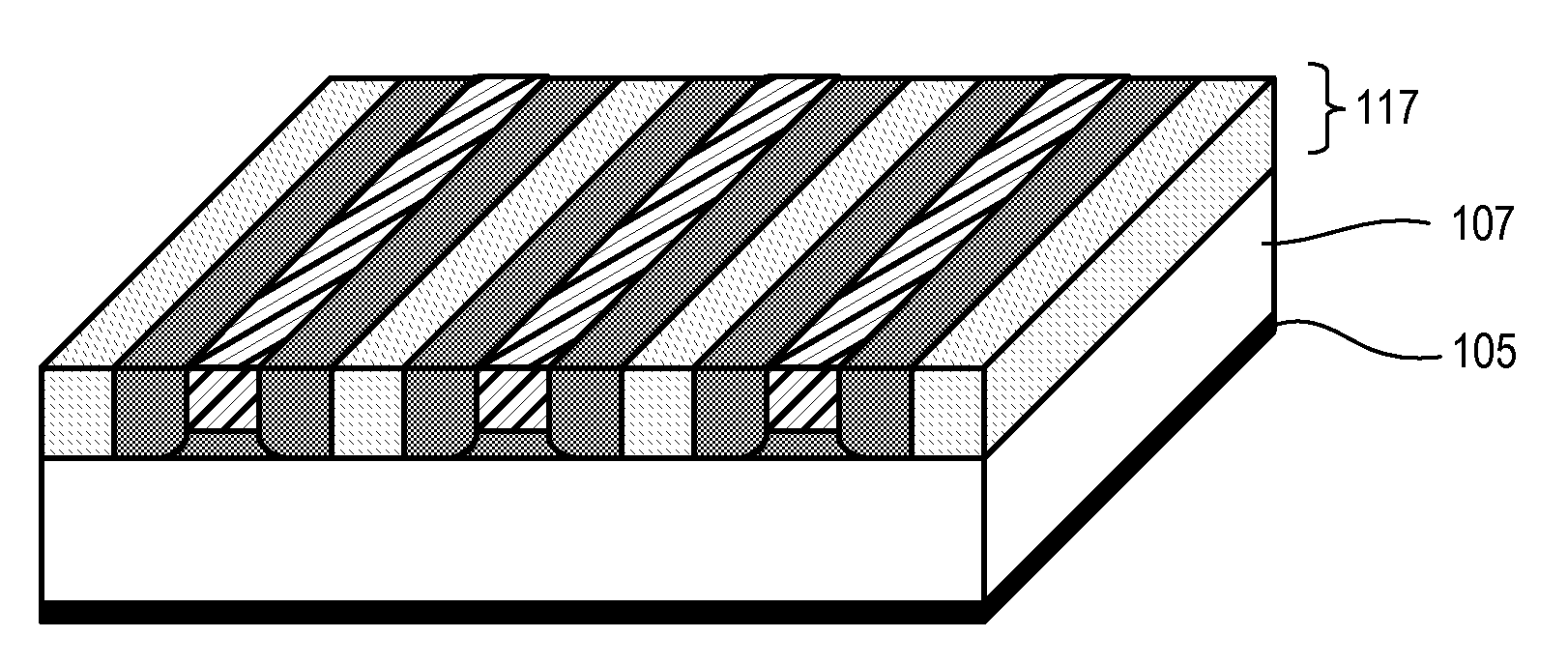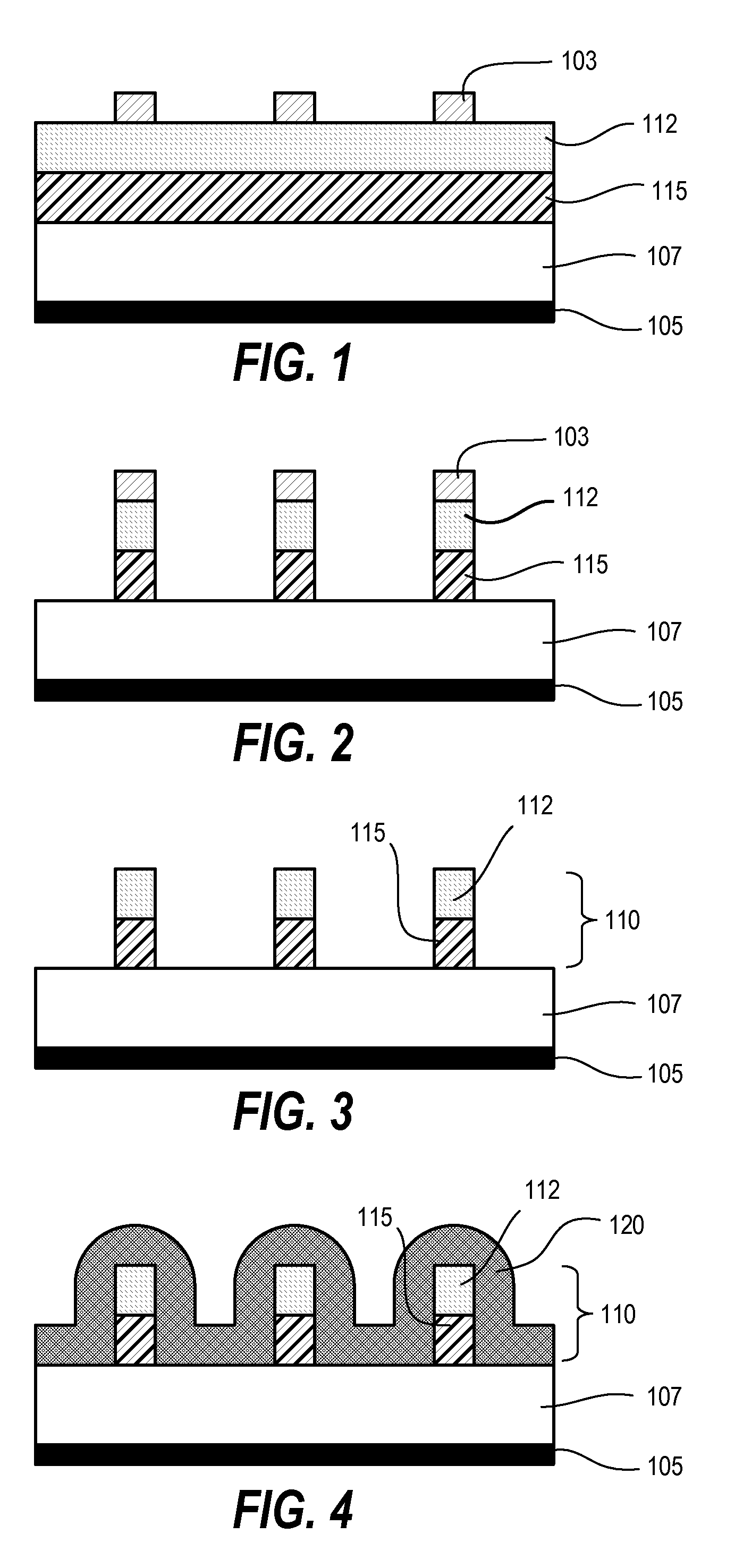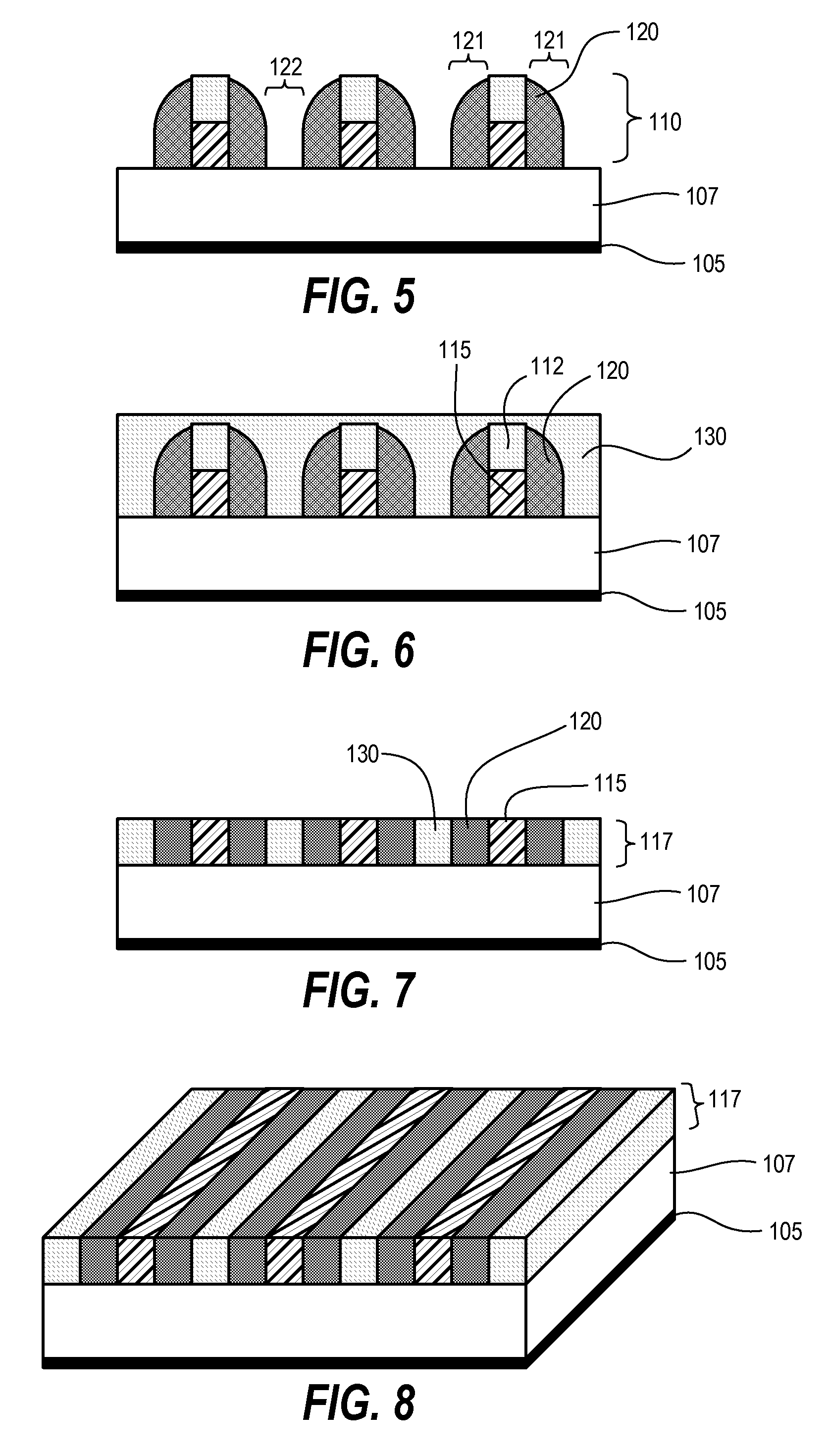Method for patterning a substrate for planarization
a technology of substrate and planarization, applied in the direction of semiconductor/solid-state device manufacturing, basic electric elements, electric instruments, etc., can solve the problems of limiting the pitch or spacing between exposed features, conventional patterning techniques suffer from poor resolution or rough surface of etched features, conventional techniques cannot provide a level of uniformity and fidelity, etc., to achieve the effect of improving ler/lwr, improving feature density, and reducing feature siz
- Summary
- Abstract
- Description
- Claims
- Application Information
AI Technical Summary
Benefits of technology
Problems solved by technology
Method used
Image
Examples
Embodiment Construction
[0025]Techniques disclosed herein include increasing pattern density for creating high-resolution trenches, contact openings, and other features. Patterning techniques herein include combining double patterning techniques, sidewall image techniques, as well as novel planarizing techniques. Patterning techniques herein can quadruple a density of features in a given pattern. In other words, such patterning techniques can take an initial critical dimension pitch and reduce this initial pitch so that it is a quarter or eighth of its initial size, or smaller. This feature reduction technique also provides features or openings having high uniformity and fidelity. Patterning techniques herein can also enable doubled patterns at higher resolutions than is conventionally available.
[0026]In general, methods herein can include depositing a conformal spacer on a bi-layer or tri-layer mandrel (multi-layer) or other topographic feature. The conformal spacer thus wraps around the mandrels and unde...
PUM
 Login to View More
Login to View More Abstract
Description
Claims
Application Information
 Login to View More
Login to View More - R&D
- Intellectual Property
- Life Sciences
- Materials
- Tech Scout
- Unparalleled Data Quality
- Higher Quality Content
- 60% Fewer Hallucinations
Browse by: Latest US Patents, China's latest patents, Technical Efficacy Thesaurus, Application Domain, Technology Topic, Popular Technical Reports.
© 2025 PatSnap. All rights reserved.Legal|Privacy policy|Modern Slavery Act Transparency Statement|Sitemap|About US| Contact US: help@patsnap.com



